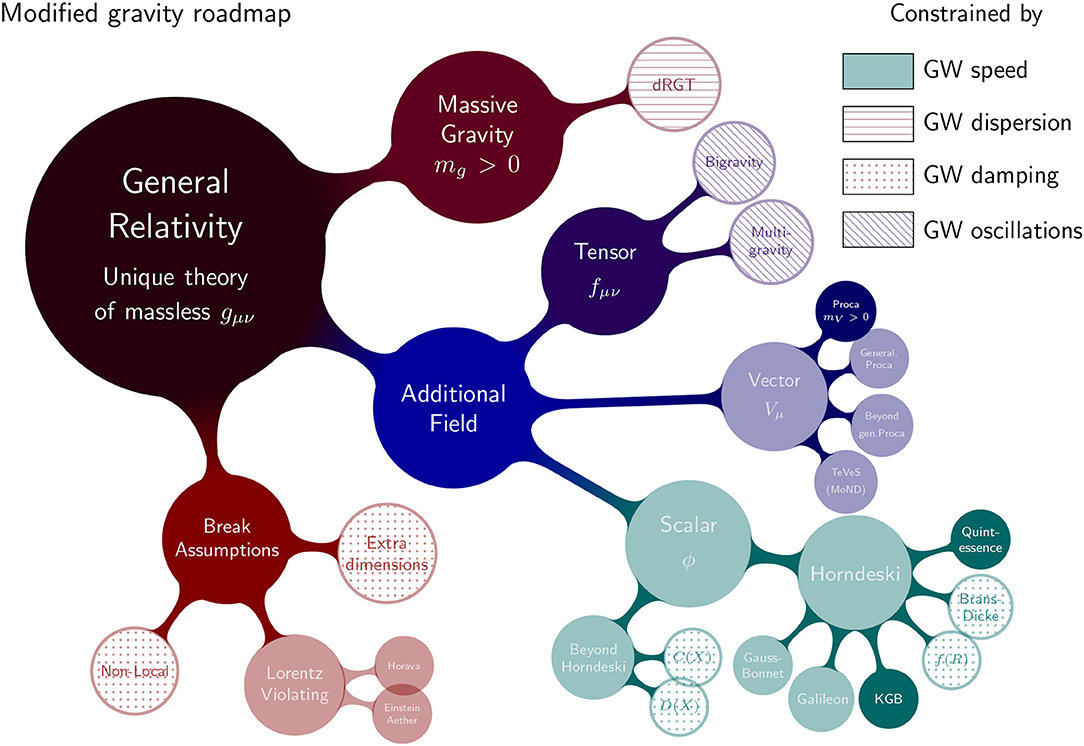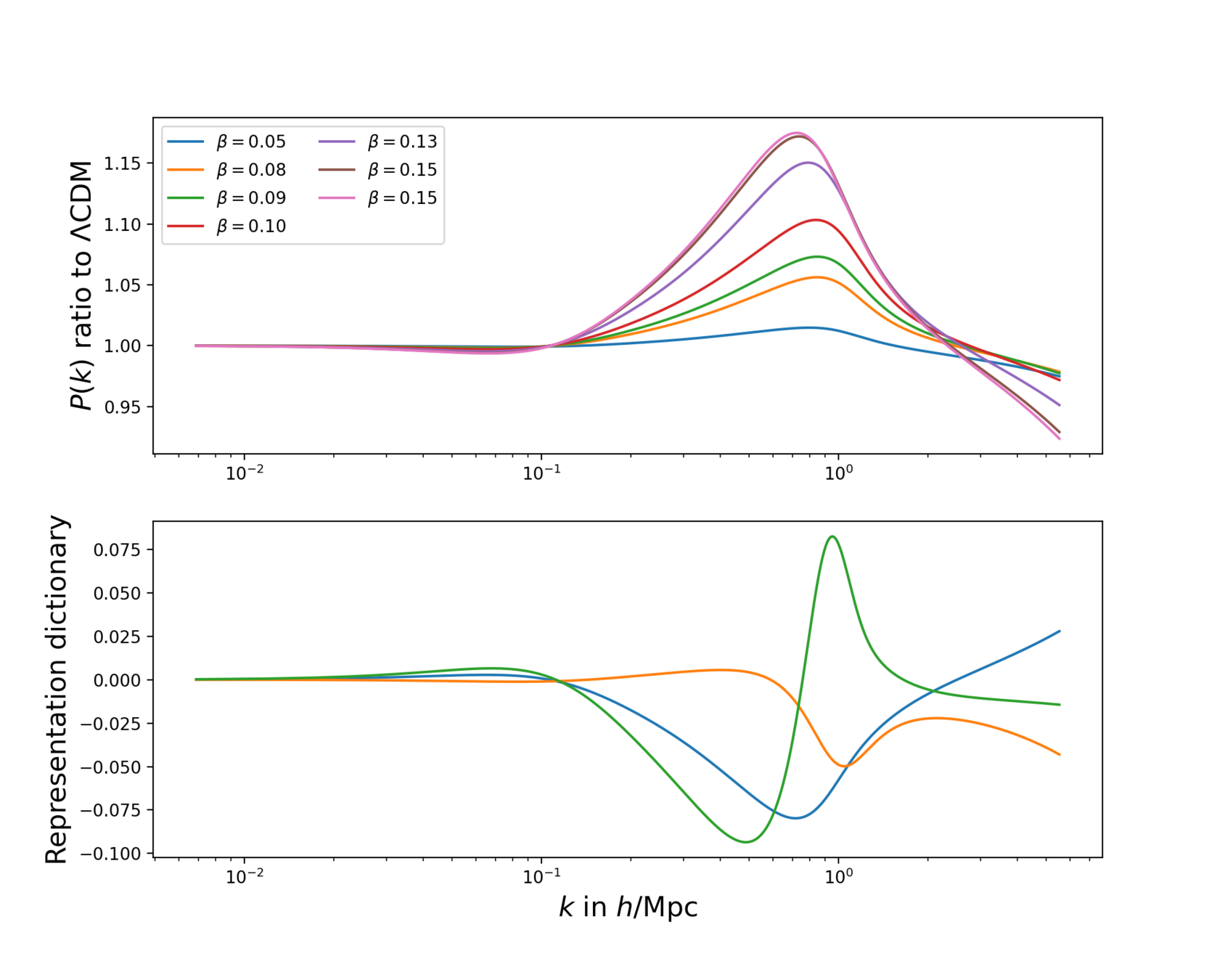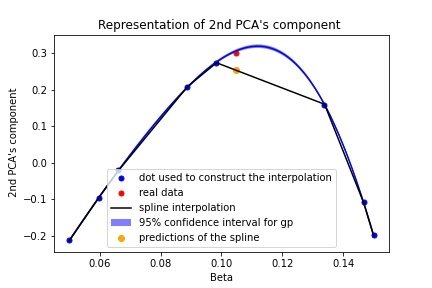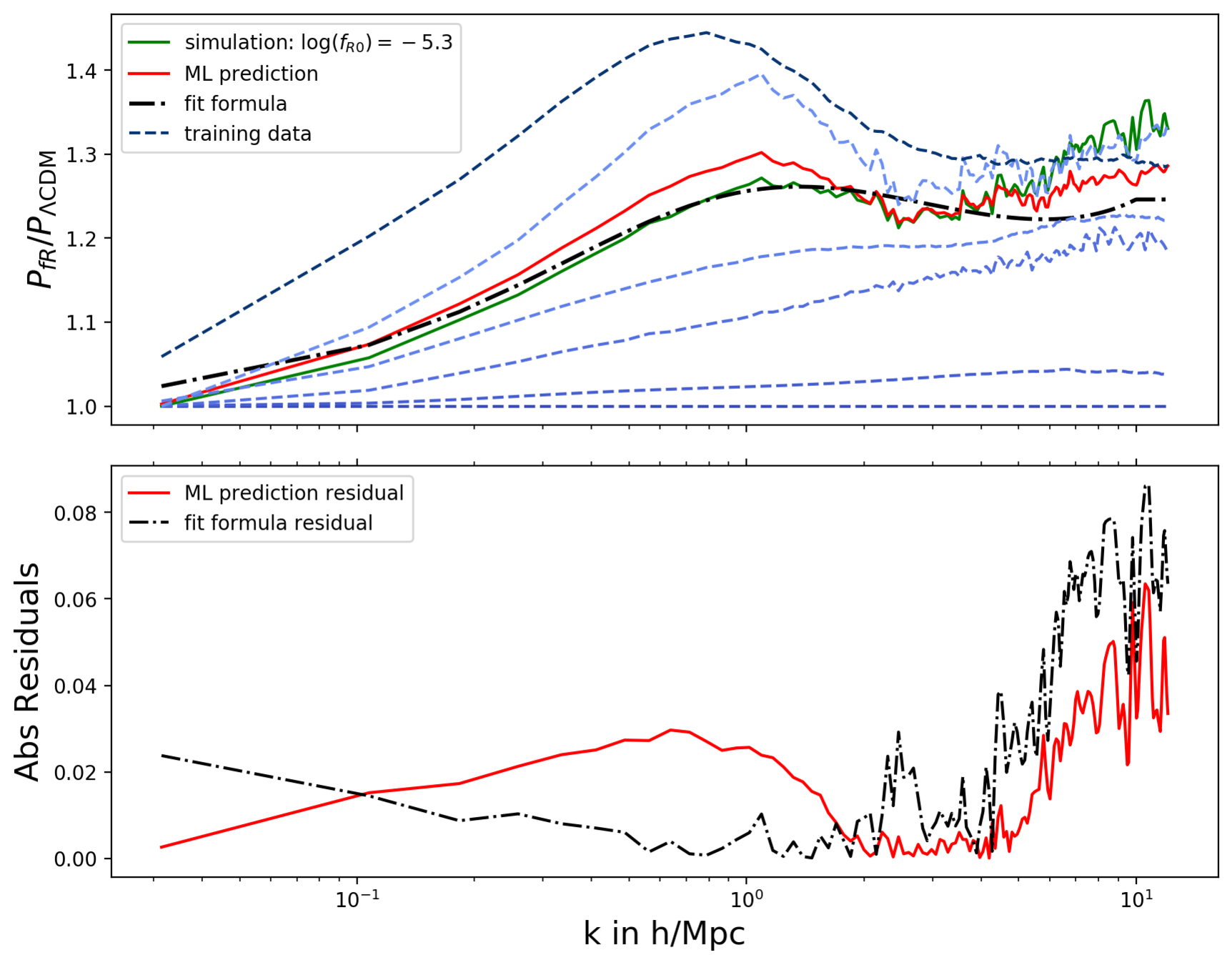On the quest for Dark Energy with nonlinear observables in the era of Euclid
Santiago Casas
CEA Paris-Saclay, DAp, CosmoStat


Cosmic Microwave Background
Planck 2018 CMB Temperature map (Commander) . wiki.cosmos.esa.int/planck-legacy-archive/index.php/CMB_maps

Large Scale Structure
Illustris Simulation: www.nature.com/articles/nature13316

Santiago Casas, Oslo, 23.10.2020

The Standard LCDM model
- The Universe is expanding in an accelerated way.
- Expansion kicked in only recently.
- Universe is consistent with a flat geometry.

- Supernovae 1998. Perlmutter, Schmidt and Riess, Nobel Prize 2011.
- Observations can be explained with a cosmological constant and 30% matter.

Santiago Casas, Oslo, 23.10.2020

The Standard LCDM model
- LCDM is still best fit to observations.
- Concordance Cosmology:
- Combination of different observables.
- Lensing
- CMB
- Clustering
- Supernovae
- Clusters



Santiago Casas, Oslo, 23.10.2020

The Standard LCDM model
- LCDM is still best fit to observations.
- Some questions remain:
- \(\Lambda\) and CDM.
- Cosmological Constant Problem:

O(100) orders of magnitude wrong
(Zeldovich 1967, Weinberg 1989, Martin 2012).
Composed of naturalness and coincidence
sub-problems, among others.
Quantum Gravity?

Santiago Casas, Oslo, 23.10.2020

The Standard \(\Lambda\)CDM model
- \(\Lambda\)CDM is still best fit to observations.
- Some questions remain:
- H0 tension, now ~5\(\sigma\)


Tension between local, and strong-lensing measurements of the Hubble parameter vs. CMB measurements

Santiago Casas, Oslo, 23.10.2020

The Standard \(\Lambda\)CDM model
- LCDM is still best fit to observations.
- Some questions remain:
- \(\sigma_8\) - \(\Omega_m\) tension
Planck, Clusters and Lensing discrepancy


DES 1yr results, Clusters and WL. arXiv: 2002.11124
Planck 2018 results: arxiv:1807.06209

Santiago Casas, Oslo, 23.10.2020

Alternatives to \(\Lambda\)CDM
Ezquiaga, Zumalacárregui, Front. Astron. Space Sci., 2018


Santiago Casas, Oslo, 23.10.2020

Alternatives to \(\Lambda\)CDM
- Background is well constrained to be around \(w=-1\) (cosmological constant)
- Gravitational Wave speed = c
- Constraints from Galaxy morphology and solar system
- Black holes
- Coupling to baryons
- Non-linear regime pretty much unconstrained
- Fifth forces, couplings

Santiago Casas, Oslo, 23.10.2020

Euclid Space Satellite


Santiago Casas, Oslo, 23.10.2020

Euclid Space Satellite
Santiago Casas, Oslo, 23.10.2020
Euclid Space Satellite

- Two instruments:
- VIS (visible photometer): shape and orientation of 1.5 billion galaxies!
- NISP (near infrared spectrograph): 30 million galaxy spectra!



- 15 000 square degrees in the sky
- 16 countries, ~1500 members
- ~170 Petabyte of data!

Santiago Casas, Oslo, 23.10.2020

Weak Lensing
- Influence of matter-energy: galaxies align and get distorted
- Correlation function
of cosmic shear: information about matter content
and expansion.




Santiago Casas, Oslo, 23.10.2020

GC: Baryon Acoustic Oscillations
- Radiation and pressure vs. gravity created a particular scale at the time of recombination.


Hu, Sugiyama (1996)
The precise shape of oscillations depends on DM content, baryon content, geometry of the Universe and the evolution of Dark Energy.

Santiago Casas, Oslo, 23.10.2020

GC: Baryon Acoustic Oscillations
What we actually measure

The two-point correlation function


Santiago Casas, Oslo, 23.10.2020

GC: Baryon Acoustic Oscillations
Non-linear structure formation is important!


FT


Santiago Casas, Oslo, 23.10.2020

GC: Redshift Space Distortions
Galaxy clustering in redshift space: distorted by peculiar velocities. Effect depends on: observation angle, bias and growth rate of structure.



Anisotropic two-point correlation function of eBOSS.
Perp. and parall. to the line of sight.

Santiago Casas, Oslo, 23.10.2020

Galaxy Clustering Recipe


BAO
Clustering
RSD

Spec-z
Euclid Collaboration, IST:Forecasts, arXiv: 1910.09273

Santiago Casas, Oslo, 23.10.2020

The Matter Power Spectrum

Current data:
Image: https://www.cosmos.esa.int/web/planck/picture-gallery

Santiago Casas, Oslo, 23.10.2020

The Matter Power Spectrum
Euclid:

Scales from: ~ \(10^{-3}\) to \(10\) hMpc\(^{-1}\)

Santiago Casas, Oslo, 23.10.2020

Information content in the power spectrum
\(I=N/2\)
Rimes & Hamilton (2006), arXiv:0511418


Text
For Gaussian fluctuations
Total number of modes

Santiago Casas, Oslo, 23.10.2020

Constraining power of Euclid

- Current bounds from CMB and LSS alone
- \(\mathcal{O}(1)\) for \(w_0\) combining Planck+GC+WL+SNIa
- \(\mathcal{O}(0.01)\) with Euclid
Euclid

Santiago Casas, Oslo, 23.10.2020

Euclid: A Dark Energy probe
- Dark Energy: Any dynamical cause for the accelerated expansion.



Euclid was commissioned to test with observations the most common parametrization:

And possible deviations of the growth of structures

Cosmology and Fundamental Physics with the Euclid Satellite (Amendola et al , Living Reviews in Relativity, 2018)

Santiago Casas, Oslo, 23.10.2020

Euclid: IST:Forecasts
- Mission of the IST:F, forecast constraints on \(w_0 w_a /\Lambda \mathrm{CDM}\)
- Joint effort between Science Working Groups: GC, WL, Theory.
- 3 years of work.
- Recently published in A&A.

Awardees of the Euclid STAR Prize Team 2019
Euclid preparation: VII. Forecast validation for Euclid cosmological probes. arXiv:1910.09273

Santiago Casas, Oslo, 23.10.2020

Euclid: IST:Forecasts
- Here: Flat \(w_0 w_a\mathrm{CDM}\)
- GCsp+WL+GCph+XC
- Figure of Merit:
1257 - Non-flat FoM:
500
- Optimistic:
\(\sigma_{w_0}=0.025\)
\(\sigma_{w_a}=0.092\)
Euclid preparation: VII. Forecast validation for Euclid cosmological probes. arXiv:1910.09273


Santiago Casas, Oslo, 23.10.2020

Euclid: IST:Forecasts
- Parameter decorrelation thanks to photometric XC (cross-correlation):
Euclid preparation: VII. Forecast validation for Euclid cosmological probes. arXiv:1910.09273

- FoM goes from 130 -> 325
- Figure of Correlation: 1900 -> 820

Santiago Casas, Oslo, 23.10.2020

Euclid: XC cross-correlations
Euclid preparation: VII. Forecast validation for Euclid cosmological probes. arXiv:1910.09273

Also known as 3x2pt analysys

Santiago Casas, Oslo, 23.10.2020

Euclid: Importance of XC
Tutusaus et al, Euclid: The importance of cross-correlations..., arXiv:2005.00055
- IST:F spin-off paper
- Looked into details on effect of XC
- Important effect on nuisance parameters



Santiago Casas, Oslo, 23.10.2020

Euclid: Importance of XC
Tutusaus et al, Euclid: The importance of cross-correlations..., arXiv:2005.00055
- IST:F spin-off paper
- Looked into details on effect of XC
- Important effect on nuisance parameters

Induced parameter bias from wrong assumptions on IA:

Santiago Casas, Oslo, 23.10.2020

Euclid: Importance of XC
Tutusaus et al, Euclid: The importance of cross-correlations..., arXiv:2005.00055
- IST:F spin-off paper
- Looked into details on effect of XC
- Important effect on nuisance parameters
- Revised some assumptions about bias



Santiago Casas, Oslo, 23.10.2020

Euclid: Importance of XC
Tutusaus et al, Euclid: The importance of cross-correlations..., arXiv:2005.00055
- IST:F spin-off paper
- Looked into details on effect of XC
- Important effect on nuisance parameters
- Included some new terms in the non-linear modelling of GC




Santiago Casas, Oslo, 23.10.2020

Text
The Problem of Non-linearities
Personal list of favorite non-linear problems
(in no particular order)
- Problem #1: The deeply non-linear power spectrum (Pk_nl)
- Problem #2: Baryonic effects
- Problem #3: Galaxy bias
- Problem #4: Intrinsic Alignments
- Problem #5: Redshift space distortions for Modified Gravity
- Problem #6: Inconsistent treatment of Pk_nl for observables
- Problem #7: Relativistic and "exotic" N-body simulations

Santiago Casas, Oslo, 23.10.2020

Text
- Problem #1: The deeply non-linear power spectrum

- Non-linear prescriptions, currently used in the community differ by up to 10%.
- Situation aggravates in extensions of \(\Lambda\mathrm{CDM}\).
- Emulators
- Fast approx methods: COLA...
- Fast-PM, Flow-PM
Euclid: M.Martinelli et al., Impact of nonlinear prescriptions... (in internal review)
Preliminary

Santiago Casas, Oslo, 23.10.2020

Text
- Problem #1: The deeply non-linear power spectrum
- Parameter estimation biases, when exploring small scales:
Euclid: M.Martinelli et al., Impact of nonlinear prescriptions... (in internal review)

Preliminary

Santiago Casas, Oslo, 23.10.2020

Text
- Problem #2: Baryonic effects
- We tested also the impact of including baryonic effects
Euclid: M.Martinelli et al., Impact of nonlinear prescriptions... (in internal review)

Preliminary

Santiago Casas, Oslo, 23.10.2020

Text
- Problem #2: Baryonic effects
- Prefactor fitted and calibrated using hydrodynamical N-body simulations:
van Daalen et al, Mon.Not.Roy.Astron.Soc. 415 (2011) 3649-3665



Santiago Casas, Oslo, 23.10.2020

Text
- Problem #2: Baryonic effects
- Baryonic effects can have an important impact on WL studies with extended cosmologies.
- f(R) cosmology + fitting formula + baryonic corrections
Schneider et al., Baryonic effects for weak lensing. Part II..., arXiv:1911.08494


Santiago Casas, Oslo, 23.10.2020

Text
-
Problem #1
- For extended cosmologies, few simulations available
- Fitting formula/emulators calibrated form simulations.
- N-body (DUSTGRAIN, ELEPHANT) and COLA
Emulators for the non-linear matter power spectrum beyond ΛCDM, Winther, Casas, Baldi, et al, arXiv:1903.08798



Santiago Casas, Oslo, 23.10.2020

Text
Forecasts for f(R) from Euclid primary probes
- Using Winther et al fitting formula and an extension on the
GC RSD+BAO recipe for scale-dependent growth.
Euclid: Casas et al, Constraints on f(R) cosmologies ..., (under internal review)

Preliminary

Santiago Casas, Oslo, 23.10.2020

Text
Forecasts for f(R) from Euclid primary probes
- Using Winther et al fitting formula and an extension on the
non-linear GC RSD+BAO recipe and codes. - \(f(R)\) induces an extra fifth force. Scale dependent growth.
Euclid: Casas et al, Constraints on f(R) cosmologies ..., (under internal review)


Santiago Casas, Oslo, 23.10.2020

Text
Forecasts for f(R) from Euclid primary probes
- Using Winther et al fitting formula and an extension on the
non-linear GC RSD+BAO recipe and codes. - Tested \(f_{R0}=5\times10^{-5}\) and \(f_{R0}=5\times 10^{-6}\)
Euclid: Casas et al, Constraints on f(R) cosmologies ..., (under internal review)

Preliminary

Santiago Casas, Oslo, 23.10.2020

Text
Problem #5: Redshift space distortions for Modified Gravity
- Consistent treatment of RSD for clustering under scale-dependence and massive neutrinos, still under investigation.
- In WP6 implemented the minimal extension to IST:F.
- 1-loop Perturbation theory and EFToLSS is needed, removing Einstein-de Sitter assumption and including scale-dependent terms. Ongoing effort in TWG-WP7.
Euclid: Casas et al, Constraints on f(R) cosmologies ..., (under internal review)



Santiago Casas, Oslo, 23.10.2020

Text
Problem #6: Inconsistent treatment between observables
- Usually: Lensing and Clustering observables use different underlying dark matter power spectrum.
(e.g. Linear, 1-loop, Halofit) - Hybrid-Pk method unifies these approaches.
- Uses Gaussian Streaming Model for RSD.
- REACT for extensions to LCDM.
- Calibrated using COLA.
Hybrid P(k), general, unified, non-linear...., Bose, Winther, Pourtsidou, Casas, et al. arXiv: 1911.04391


Santiago Casas, Oslo, 23.10.2020

Text
Problem #6: Relativistic and "exotic" N-body simulations
- Models with backreaction and clustering Dark Energy.
- Non-linearizable couplings. Varying Masses.
- Connects mass of neutrino to energy scale of DE.
- Oscillating Neutrino Structures.
- Semi-relativistic N-body simulations.
Casas, Pettorino, Wetterich, arXiv: 1608.02358, PRD94, 103518


Santiago Casas, Oslo, 23.10.2020

Text
Machine Learning for Emulation
- Few simulations available in Modified Gravity.
- Represent the complicated structures in a simpler space.
- Representation Learning.

Methods:
- Principal Component
Analysis (PCA) - PCA+Gaussian Proceses
- Dictionary Learning (DL)
- Optimal Transport
- Wasserstein DL

Santiago Casas, Oslo, 23.10.2020

Text
Machine Learning for Emulation
- Few simulations available in Modified Gravity.
- Represent the complicated structures in a simpler space.
- Representation Learning.
Methods:
- Principal Component
Analysis (PCA) - PCA+Gaussian Proceses
- Dictionary Learning (DL)
- Optimal Transport
- Wasserstein DL




Santiago Casas, Oslo, 23.10.2020

Text
Machine Learning for Emulation
Method:
- PCA+Gaussian Proceses.
- In new space, representation and therefore, interpolation is simpler.

Preliminary

Santiago Casas, Oslo, 23.10.2020

Text
Machine Learning for Emulation
- f(R) test on N-body
- Performs similar to fitting formulae, without the need for fine-tuned functions.
- Performance is dependent on the amount of data.
- Very preliminary results.

Preliminary

Santiago Casas, Oslo, 23.10.2020

Text
Machine Learning for Emulation
- Performance is dependent on the amount of data and the noise.

Preliminary

Santiago Casas, Oslo, 23.10.2020

Text
Machine Learning for Emulation
- User-friendly, general code, to be released this year.
- Great work by Raphaël Baena on the code implementation and tensor-flow.


Santiago Casas, Oslo, 23.10.2020

Text
Conclusions
- Euclid and next-generation surveys will be powerful probes for Cosmology.
- Primary probes: Galaxy Clustering and Weak Lensing
- The underlying non-linear power spectrum contains most of the information.
- Great advances in non-linear modelling recently.
- Many challenges ahead.
- Especially in models beyond standard \(\Lambda\mathrm{CDM}\).
- Machine Learning algorithms and hybrid methods could be the way to overcome some of these challenges.